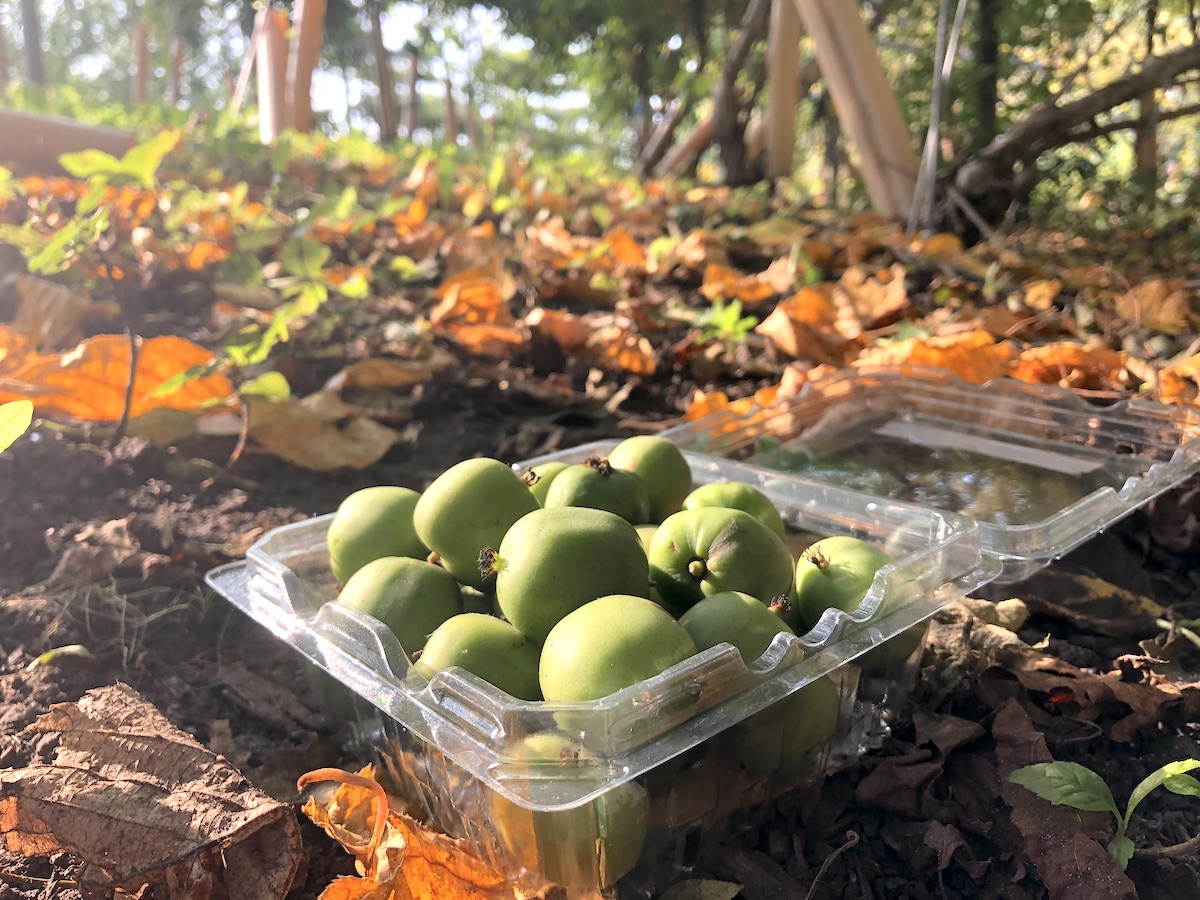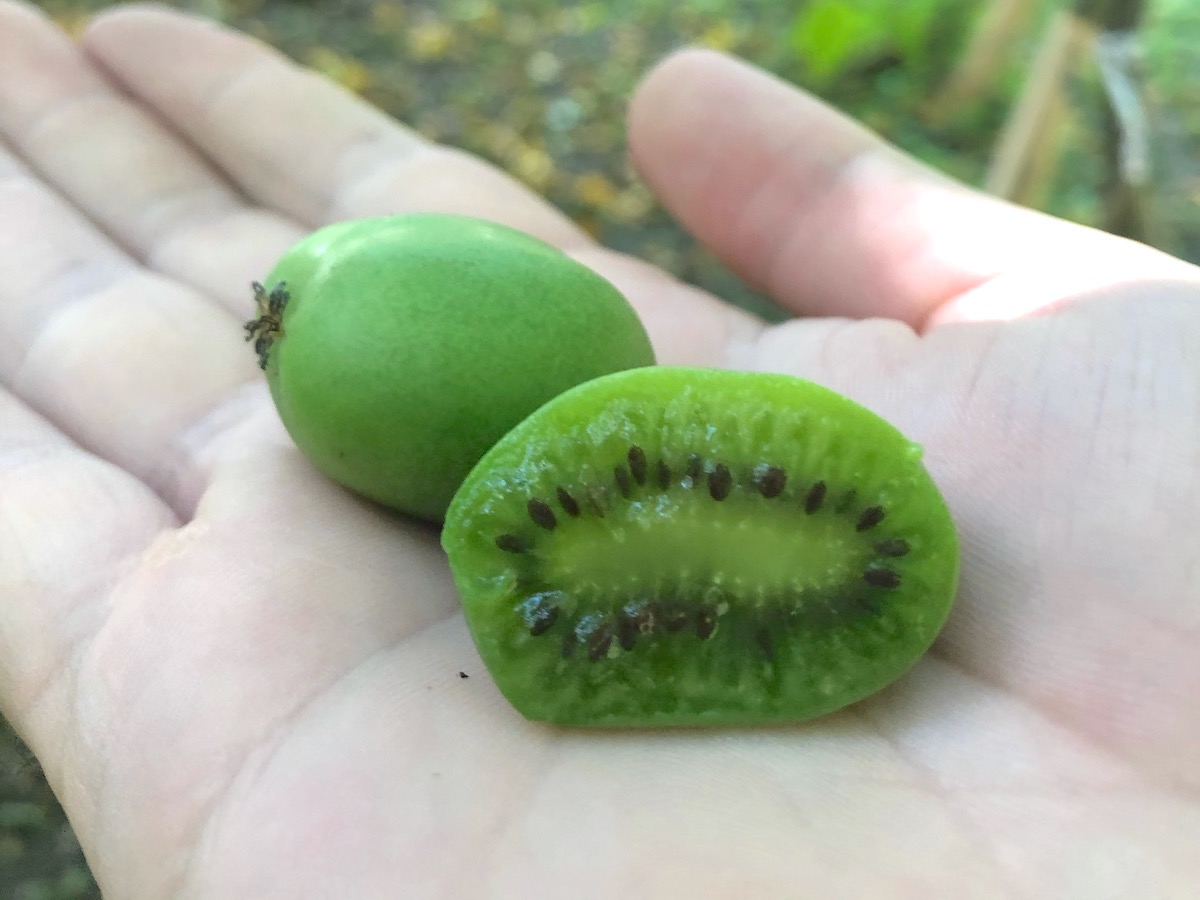

Over the past several months, the University of Minnesota has received a few questions about which kiwiberry varieties are available on the market for planting that will have a chance of bearing fruit in the state.
There are several species referred to as kiwiberry, but in this post we will be focusing primarily on Actinidia arguta which is the most widely associated species with the name kiwiberry.


One of the challenges of growing this species in cold climates is that there are associated risks. During particularly cold winters (-25˚ F), severe winter damage requiring trunk renewal has been seen in many varieties in Minnesota. Late spring frosts also challenge fruit production as plants begin to push buds before the last frost date, which is around May 15 in the Twin Cities area (Latocha, 2008). Despite these challenges, there are varieties suited to growing in gardens and even commercial production for their fruit that is similar in size to a large table grape (~13-16g) with interesting tropical, sweet flavors.
A. arguta are reported as cold hardy to zone 5 (-20˚ F to 15˚ F), but reports from native ranges have observed survival to -30˚ F (Asakura and Hoshino, 2016). Although data is not available for all varieties you might find for purchase, some anecdotal evidence has suggested that a few varieties show reliable cold hardiness. ‘Natasha’ and ‘Tatyana’ are two more accessible fruiting varieties that have been observed as showing reliable cold hardiness and production in Minnesota. Both of these varieties produce round green, sweet fruits.
Some people who have tasted ‘Natasha’ describe it as having a sweet, mango-tropical flavor. If you want fruit on either of these varieties, you will have to include pollinizer plants as kiwiberry produce male and female flowers on separate plants (Strik and Hummer, 2006). ‘Andrey’ is sold as a cold hardy pollinizer for these two fruiting varieties. However, even these varieties are at risk of some winter damage when temperatures dip below -20˚ F to -25 ˚ F or when spring frosts occur.


If you like a challenge, ‘Issai’, ‘Ananasnaya’, ‘Geneva 3’, and ‘Hardy Red’ are more popular fruiting varieties that can be readily found online for purchase but might be considered more susceptible to cold damage in Minnesota. ‘Issai’ is currently the only self-pollinating variety available but certainly fruit might be improved with a pollinizer. ‘Ananasnaya’ (also found as ‘Anna’) and ‘Geneva 3’ are both noted as having green flesh and interesting tropical flavors. ‘Hardy Red’ is a red-fleshed variety that starts as green and develops a deep red coloration as the fruit ripens. ‘Meader’ is typically listed as an appropriate pollinizer for ‘Geneva 3’ and the others mentioned here.
Another species to consider
Though A. arguta is a common species for production, another species of interest might be A. kolomikta. The fruits tend to be smaller than A. arguta at about 3-7g, but they have been reliably cold hardy through the seasons in research trials. A. kolomikta fruits tend to have more floral or kiwi notes compared to some of the more tropical flavors found in A. arguta. Varieties are more challenging to find but ‘Krupnopladnaya’ (produces fruit on the larger side for A. kolomikta), ‘Sentyabraskaya’, and ‘Aromatanaya’ would be three to keep an eye out for from vendors.


Below are a few additional resources that describe varieties available for purchase online along with a few vendors where some of the varieties may be found.
No matter which variety you choose, growing these fruits are sure to reward you with interesting flavors. Remember to check with your local county Extension about any restrictions.
Variety descriptions
Vendors
– Seth Wannemuehler, graduate research assistant, University of Minnesota